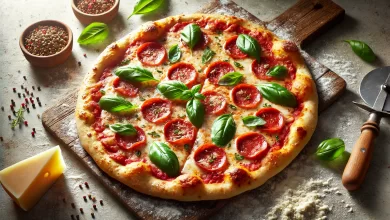How to Make Gluten-Free Recipes for Healthy Meals
Discover Simple, Gluten-Free Recipes That Offer Both Great Taste and Nutritional Benefits for a Healthier Lifestyle

In recent years, the demand for gluten-free recipes has surged, driven by the increasing awareness of gluten intolerance and celiac disease. Whether you’re new to gluten-free cooking or a seasoned pro, this guide will help you understand how to make gluten-free recipes that are both delicious and nutritious.

Understanding Gluten and Its Impact
Gluten is a protein found in wheat, barley, and rye. For individuals with celiac disease or gluten sensitivity, consuming gluten can lead to severe health issues, including digestive problems, fatigue, and nutrient deficiencies. Therefore, learning how to make gluten-free recipes is essential for those affected.
Essential Ingredients for Gluten-Free Recipes
When making gluten-free recipes, it’s crucial to use ingredients that do not contain gluten. Here are some common gluten-free ingredients:
- Gluten-Free Flours: Almond flour, coconut flour, rice flour, and chickpea flour are excellent substitutes for wheat flour.
- Starches: Cornstarch, potato starch, and tapioca starch can help thicken sauces and soups.
- Binders: Xanthan gum and guar gum are often used to provide structure in gluten-free baking.
Tips for Making Gluten-Free Recipes
- Read Labels Carefully: Always check the labels of packaged foods to ensure they are gluten-free. Cross-contamination can occur during manufacturing.
- Experiment with Flours: Different gluten-free flours have unique textures and flavors. Experiment to find the best combination for your recipes.
- Use Fresh Ingredients: Fresh fruits, vegetables, and meats are naturally gluten-free and can enhance the flavor of your dishes.
Popular Gluten-Free Recipes
Here are some popular gluten-free recipes to get you started:
- Gluten-Free Pancakes: Made with almond flour and a touch of honey, these pancakes are fluffy and delicious.
- Quinoa Salad: A refreshing salad with quinoa, fresh vegetables, and a tangy lemon dressing.
- Gluten-Free Pizza: Use a cauliflower crust or a gluten-free flour blend to make a crispy and tasty pizza base.
Baking Gluten-Free Bread
One of the most challenging aspects of gluten-free cooking is baking bread. Gluten provides elasticity and structure to bread, so without it, the texture can be dense and crumbly. Here are some tips for baking gluten-free bread:
- Use a Mix of Flours: Combining different gluten-free flours can mimic the texture of wheat bread.
- Add Moisture: Ingredients like applesauce, yogurt, or mashed bananas can add moisture to gluten-free bread.
- Let It Rise: Allowing the dough to rise for a longer period can improve the texture and flavor.
Avoiding Cross-Contamination
When preparing gluten-free recipes, it’s essential to avoid cross-contamination with gluten-containing foods. Here are some tips:
- Separate Utensils: Use separate utensils, cutting boards, and cookware for gluten-free cooking.
- Clean Surfaces: Thoroughly clean all surfaces and equipment before preparing gluten-free recipes.
- Store Separately: Keep gluten-free ingredients and foods in separate containers to prevent contamination.

Conclusion
Learning how to make gluten-free recipes can be a rewarding experience, offering a variety of delicious and healthy meals. By understanding the basics of gluten-free cooking and experimenting with different ingredients, you can create dishes that everyone will enjoy. Remember to always read labels, avoid cross-contamination, and have fun in the kitchen. Happy cooking!
By following these guidelines, you’ll be well on your way to mastering how to make gluten-free recipes. Whether you’re baking bread, preparing a quick dinner, or making a sweet treat, the possibilities are endless. Enjoy the journey of discovering new flavors and textures in your gluten-free culinary adventures.




